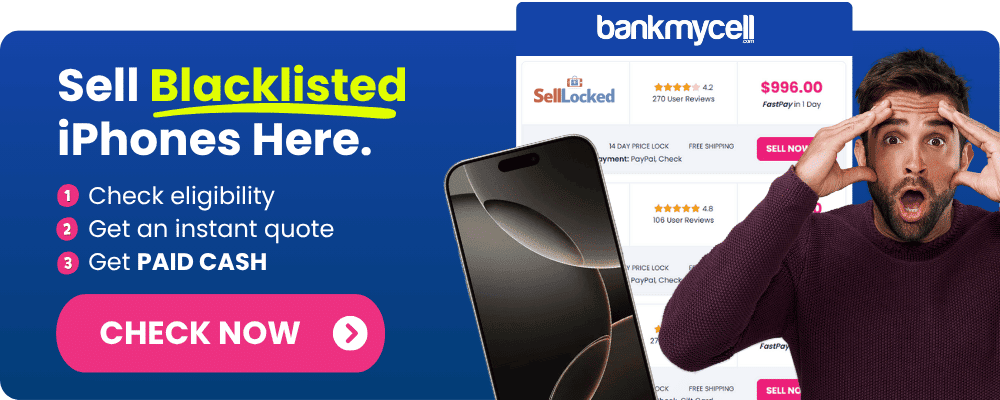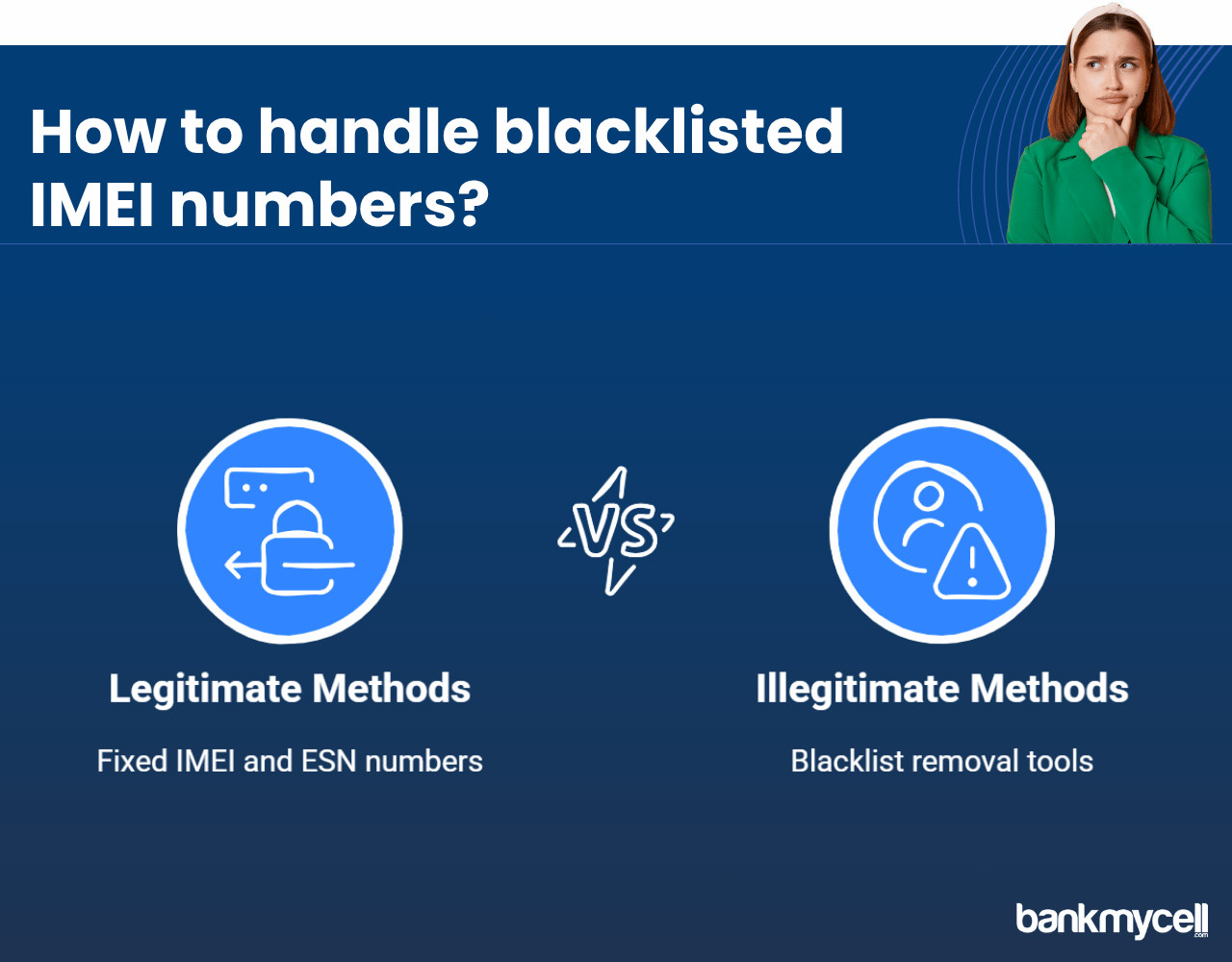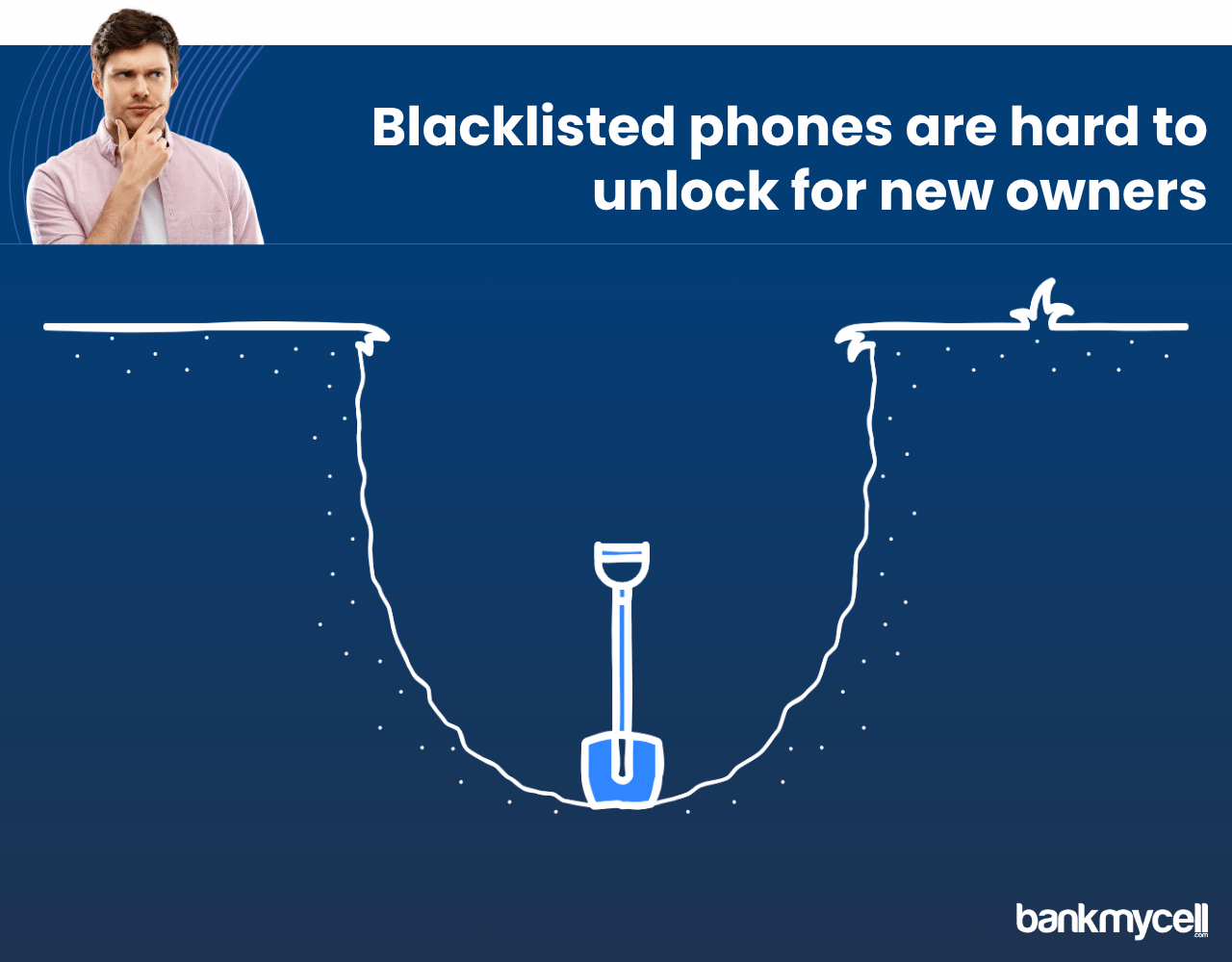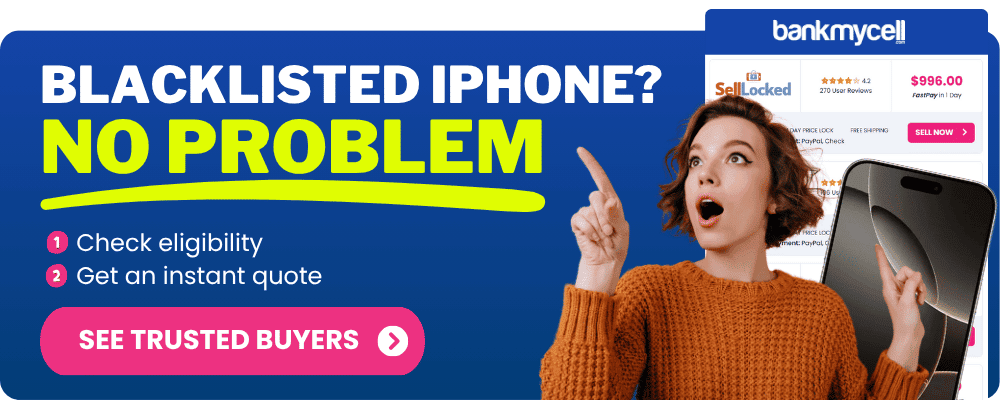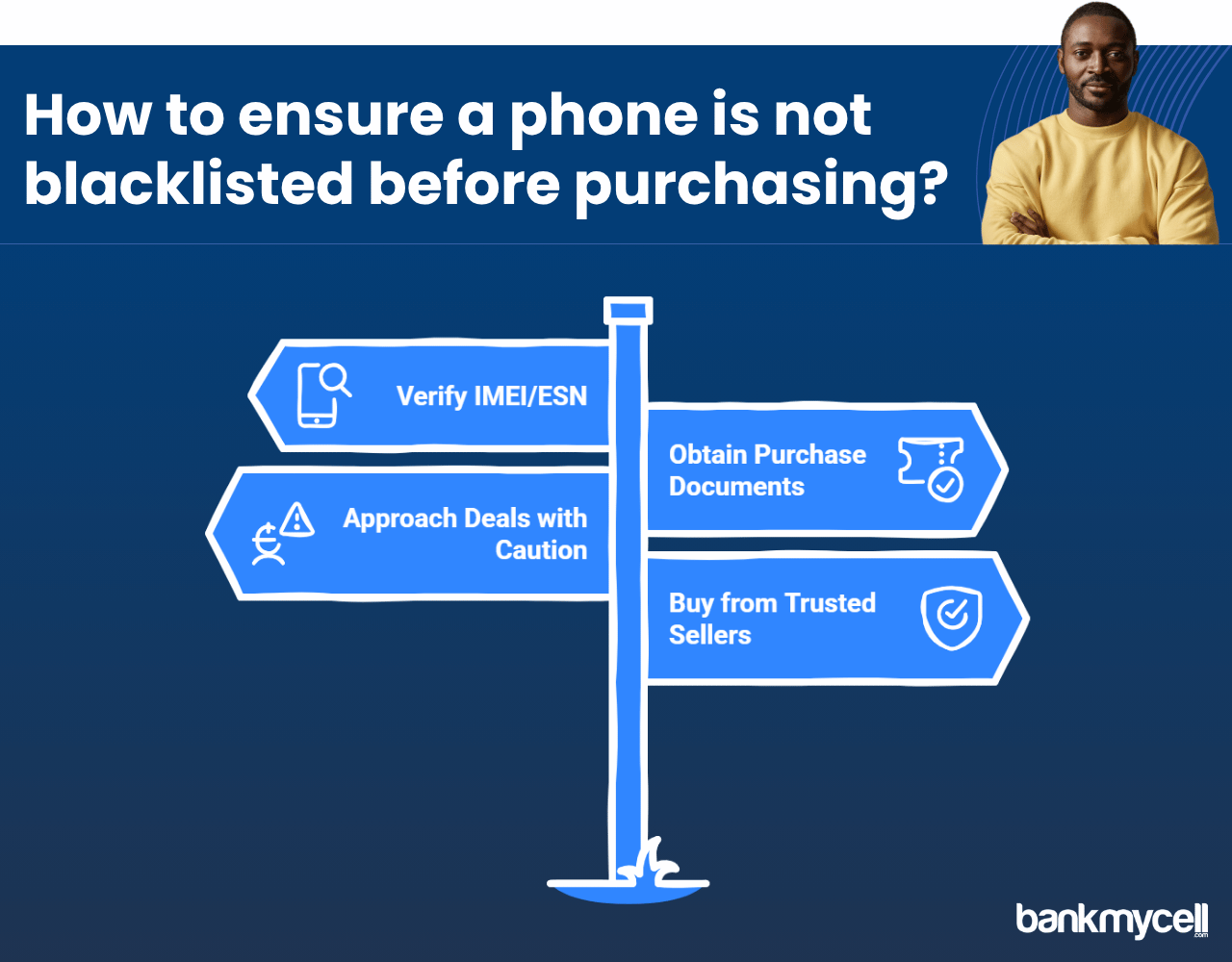iPhone Blacklist Removal Tools List: The Truth About IMEI Blacklist Removal
60-Second Summary
Most iPhone blacklist removal tools are elaborate scams. The harsh truth: only your original carrier can legitimately remove blacklist status, making 99% of online “removal services” fraudulent operations designed to steal your money and personal information.
Why These Tools Don’t Work
- Hardware limitation: IMEI numbers are permanently embedded in your iPhone’s hardware and cannot be changed
- Database security: Carrier blacklist databases intentionally prevent external manipulation
- Shared networks: All major carriers share blacklist information, making bypasses impossible
Common Scam Red Flags
- Upfront payment demands before any service delivery
- Identity theft risks through IMEI and personal data collection
- Malware distribution via “removal software” downloads
- Fake testimonials claiming successful IMEI modifications
Your Legitimate Options
If you’re the original owner:
- Contact your original carrier with proof of purchase and resolve any outstanding bills
- Verify database errors that may have incorrectly flagged your device
If legitimate removal fails:
- Use as WiFi-only device for apps, gaming, and media
- Sell to reputable buyback services like BankMyCell for competitive pricing on blacklisted devices
- Part out valuable components (screen, battery, camera) which retain full value
Protection Strategy
When buying: Always verify IMEI status through official carrier tools before purchase When selling: Disclose blacklist status honestly and consider BankMyCell‘s transparent buyback process for blacklisted iPhones
Bottom Line: Save your money and avoid the scams. Accept your device’s blacklist status and either repurpose it for WiFi use or sell it to a legitimate buyback service. Any service promising to “clean” your IMEI is lying—the technology simply doesn’t exist outside of authorized carrier systems. Can’t get your iPhone removed from blacklist? BankMyCell accepts blacklisted iPhones in various conditions while ensuring complete data security. Get competitive buyback offers from reliable shops with free shipping—turning your blacklisted device into value toward a replacement iPhone instead of losing money to scam removal services.
Disclaimer: You can sell blacklisted iPhones as long as you’re the legal owner. For example, if you bought the iPhone from a store or a person and it’s not found or stolen, you can sell it. If you’re unsure, check with the store you choose, and they will guide you.
Do you urgently need a method to lift the blacklist status of your iPhone by using IMEI blacklist removal tools?
Websites offering quick fixes through “iPhone blacklist removal tools” often target owners whose iPhones have been blacklisted because of reports of loss or theft or due to unpaid bills. The propositions of blacklist removal tools can seem appealing to anyone who owns a blacklisted phone that cannot connect to cellular networks.
Here’s the problem:
Unfortunately the majority of iPhone blacklist removal tools along with their corresponding services operate as scams targeting desperate phone owners.
And that’s not all…
Utilizing a blacklist removal service that appears legitimate may expose you to both legal problems and additional financial losses regarding your blacklisted device.
iPhone blacklist removal tools and IMEI blacklist removal services are products which claim to restore a blacklisted device’s functionality by fixing its IMEI number.
Services, software and procedures known as blacklisted iPhone removal tools allege to take blacklisted phones off carrier restrictions by repairing their IMEI numbers and restore full functionality to blacklisted iPhones and other mobile devices.
Blacklist removal tools usually come in a variety of formats.
- Some online tools assert they can clean your IMEI to remove it from the blacklist.
- There exists software that claims to alter your iPhone’s International Mobile Equipment Identity (IMEI).
- Paid removal services allegedly “hack” carrier blacklist databases to restore blacklisted mobile devices to functionality.
- IMEI cleaning services and “unblocking” or “cleaning” solutions work for both iPhone and Android devices.
Think about it
Blacklisting becomes pointless if removing a device from these lists or changing an IMEI number were simple tasks. Blacklisting functions to block stolen devices and phones that have unpaid bills from being used.
IMEI removal solutions online fail to deliver because blacklist database systems intentionally prevent manipulation to maintain security.
Most services claiming to remove blacklisted iPhones or clean IMEI numbers turn out to be fraudulent.
People who own blacklisted iPhones or phones with blacklisted IMEIs often fall prey to quick-fix solutions. Multiple factors make these blacklist removal tools highly dubious.
Technical Impossibility of IMEI Blacklist Removal
Here’s the reality about IMEI blacklist removal:
- The blacklist operates through carrier network systems and wireless carrier databases instead of residing on your device.
- Hardware embedded iPhone IMEI numbers and ESN numbers remain fixed and cannot undergo legitimate modification through any IMEI repair method.
- The shared databases between carriers make it nearly impossible to bypass blacklisted IMEI numbers.
- It isn’t possible for any blacklist removal tool to legitimately change the IMEI or ESN number of iOS devices and Android phones.
Experts designed Apple security measures together with carrier networks to prevent manipulation services which claim to clean IMEI numbers.
Common IMEI Blacklist Removal Scam Tactics
Blacklist removal scams and IMEI cleaning services usually function using these specific approaches:
- These scams require upfront payment for “blacklist removal” but then vanish after obtaining your money.
- These criminals gather both your personal details and your phone’s IMEI number to commit identity theft.
- These crooks deliver malware to your device when you attempt to operate their “blacklist removal tool”.
- These services create fictional testimonials about successful IMEI blacklist removal to establish their credibility.
Blacklist removal services typically request payment before providing service but often vanish or demand extra fees for processing your IMEI blacklist removal.
Need to sell your blacklisted iPhone? BankMyCell provides fair pricing alongside quick payment options and free shipping for blacklisted devices.
Legitimate Methods to Handle Blacklisted Devices
There are several legitimate methods available to deal with a blacklisted iPhone or eliminate an IMEI blacklist.
If your iPhone has a blacklisted IMEI number there are only several legitimate options to resolve this issue.
1. Reach out to your original network provider to have your IMEI blacklist removed.
The original owner can contact the original carrier to remove the blacklist if their device was blacklisted because of reported loss or theft by mistake or due to unpaid bills or contract disputes.
- Reported lost or stolen by mistake
- Unresolved financial obligations or contractual disagreements with your mobile service provider
The only official solution to remove a blacklist applied by a network carrier requires you to contact that specific carrier. You’ll need to:
- Demonstrate ownership with documentation like your original receipt or contract.
- Settle any outstanding payments if applicable
- The owner should describe how the device was mistakenly marked as lost or stolen.
- Complete the device unlocking steps given by your carrier to delete your phone from the blacklist system.
But here’s the truth:
Carriers and mobile providers will normally deny blacklist removal assistance to anyone who isn’t the original owner because they cannot confirm whether the phone was acquired through legitimate means.
2. Verify if the Blacklisting is an Error
A mobile phone can show up as blacklisted because of multiple factors including database errors or ownership transfer flags.
- Database errors in the blacklist status
- Temporary flags during ownership transfers
- Mistakes in IMEI number entry
When faced with these situations you must contact the carrier directly to verify blacklist status and resolve any errors.
Alternative Options for Blacklisted iPhones
Here’s what you can do when legitimate methods fail to remove an iPhone from the blacklist.
Once legitimate methods for IMEI blacklist removal fail you’ll need to follow these realistic steps for a blacklisted iPhone or mobile device.
1. You can utilize a blacklisted iPhone as a WiFi-only device after removing its SIM card.
A blacklisted iPhone can still:
- Your blacklisted mobile device can gain access to the internet through WiFi connections.
- Operate applications that function without cellular connectivity.
- Be used for gaming, music, photos, etc. just like other cellular devices
Your iPhone functions like an iPod Touch when the IMEI number gets blacklisted.
2. A reputable buyback service can purchase your blacklisted device.
Several authentic buyback services accept blacklisted iPhones together with phones that have bad ESN numbers.
- Buyback services honestly disclose the diminished value of phones with blacklisted IMEIs.
- Blacklisted IMEI phone parts have legitimate applications through certain services.
- These services provide an easy method to recover a portion of your blacklisted phone’s value.
By choosing this method you can receive partial payment for your blacklisted iPhone or mobile device.
Disclaimer: You can sell blacklisted iPhones as long as you’re the legal owner. For example, if you bought the iPhone from a store or a person and it’s not found or stolen, you can sell it. If you’re unsure, check with the store you choose, and they will guide you.
3. Trade the device's components as a blacklisted mobile device.
iPhone parts maintain their value despite phones having a blacklisted IMEI.
- Displays, batteries, and cameras can be reused
- Logic boards have recoverable components
- Casings and smaller parts have value
- Parts containing serial numbers and identification codes retain practical application.
You must disclose the blacklist status of a device when selling it privately.
How to Avoid Blacklist-Related Scams
Are you looking to sell your blacklisted iPhone to someone new? BankMyCell provides fair pricing for blacklisted smartphones together with clear price structure and no shipping costs.
Protect yourself from blacklisted iPhone scams and IMEI blacklist removal scams by following these specific guidelines.
Following these guidelines will help you avoid scams related to blacklisted iPhones and IMEI blacklist removal services.
When Buying an iPhone or Mobile Phone
- Before buying a phone use legitimate carrier verification to check the phone’s IMEI number or ESN number.
- Obtain purchase verification documents from the seller or previous owner of the phone.
- Approach third-party services offering deals that seem better than realistic with caution
- Buy from trusted sellers who offer protection policies against blacklisted devices.
When Seeking IMEI Blacklist Removal
- Legitimate removal of blacklisted devices from the blacklist database can only be performed by authorized carriers.
- Do not trust any blacklist removal service that demands payment before delivering results
- Avoid downloading any software that claims it can “fix” blacklisted phones by cleaning IMEI numbers
- Approach money-back guarantees for IMEI cleaning services with caution if the company does not provide clear information.
- It is important to understand that no online tools exist which can automatically clear your device from a blacklist.
Wrapping It Up
Most iPhone blacklist removal tools and IMEI blacklist removal services offer no legitimate options. Almost all services which claim to remove iPhones from blacklists or clear blacklisted IMEI numbers deliberately deceive desperate consumers.
Learning how the IMEI blacklisting process works enables you to:
- Do not spend money on non-working IMEI cleaning services which promise ineffective results.
- When seeking IMEI blacklist removal services you should protect yourself against the risk of identity theft.
- You will attain smarter choices regarding your blacklisted device by learning about IMEI blacklisting.
- Discover legitimate methods to recover some monetary value from your phone despite its blacklisted IMEI status.
Any IMEI blacklist removal solution which appears too perfect is probably fraudulent. The most advisable approach is typically to accept your device’s blacklisted status and either continue its usage with limited capabilities or choose to sell it to a trustworthy buyback service.
Disclaimer: You can sell blacklisted iPhones as long as you’re the legal owner. For example, if you bought the iPhone from a store or a person and it’s not found or stolen, you can sell it. If you’re unsure, check with the store you choose, and they will guide you.
Helpful FAQ's
Can software change an iPhone's IMEI number?
No software that operates within legal boundaries can alter the IMEI number of an iPhone. The IMEI number remains physically embedded within the device’s hardware while multiple security protocols prevent its modification. Software that promises to modify IMEI numbers or perform IMEI cleaning should be considered malicious or fraudulent.
Can third-party services remove my iPhone from a blacklist?
Authorized third-party services do not have permission to make changes to carrier blacklist databases. Carriers enforce stringent security protocols that only permit authorized staff to make changes after verifying identity through substantial documentation.
Will my blacklisted iPhone work in other countries?
While there may be some countries that do not share blacklist information with US carriers or other GSM networks, they are in the minority and the trend is to share international blacklists. A blacklisted iPhone might work in another country, at least temporarily, but it is likely to become blacklisted on GSM networks in that country as well as the blacklist databases synchronize.
How much of the iPhone's value is lost when it is blacklisted?
The typical reduction in value of a blacklisted iPhone can be between 60% and 80% when compared to a clean device of the same model – However BankMyCell offers price comparison services for buys so you can expect a lot more. Blacklisted iPhones still have some value as parts and components, even when having a bad ESN or a blacklisted IMEI.
Will factory resetting my blacklisted iPhone unblock it?
No, factory resetting a blacklisted phone will not remove the blacklist or fix a bad ESN. The blacklist is part of the carrier’s database that is keyed to your device’s IMEI number, not to the device itself. No amount of resetting or restoring will have any effect on the blacklist status of a device.
| TODAY'S BEST iPHONE BUYBACK OFFERS | |||
|---|---|---|---|
| Device | Blacklisted | ||
| iPhone 16e | $360.00 | Compare | |
| iPhone 16 Pro Max | $1045.00 | Compare | |
| iPhone 16 Pro | $870.00 | Compare | |
| iPhone 16 Plus | $420.00 | Compare | |
| iPhone 16 | $395.00 | Compare | |
| iPhone 15 Pro Max | $730.00 | Compare | |
| iPhone 15 Pro | $650.00 | Compare | |
| iPhone 15 Plus | $335.00 | Compare | |
| iPhone 15 | $345.00 | Compare | |
| iPhone 14 Pro Max | $570.00 | Compare | |
| iPhone 14 Pro | $400.00 | Compare | |
| iPhone 14 Plus | $265.00 | Compare | |
| iPhone 14 | $235.00 | Compare | |
| iPhone 13 Pro Max | $280.00 | Compare | |
| iPhone 13 Pro | $220.00 | Compare | |
| iPhone 13 Mini | $115.00 | Compare | |
| iPhone 13 | $140.00 | Compare | |
| iPhone 12 Pro Max | $150.00 | Compare | |
| iPhone 12 Pro | $140.00 | Compare | |
| iPhone 12 Mini | $115.00 | Compare | |
| iPhone 12 | $100.00 | Compare | |
| iPhone 11 Pro Max | $115.00 | Compare | |
| iPhone 11 Pro | $115.00 | Compare | |
| iPhone 11 | $105.00 | Compare | |
| * Best market prices updated December 26th 2025 | |||

Data Source: BankMyCell compares over 100,000+ quotes and customer reviews from 20+ trusted buyback stores every 15 minutes via our data feeds, making us America’s #1 time-saving trade-in supermarket.
